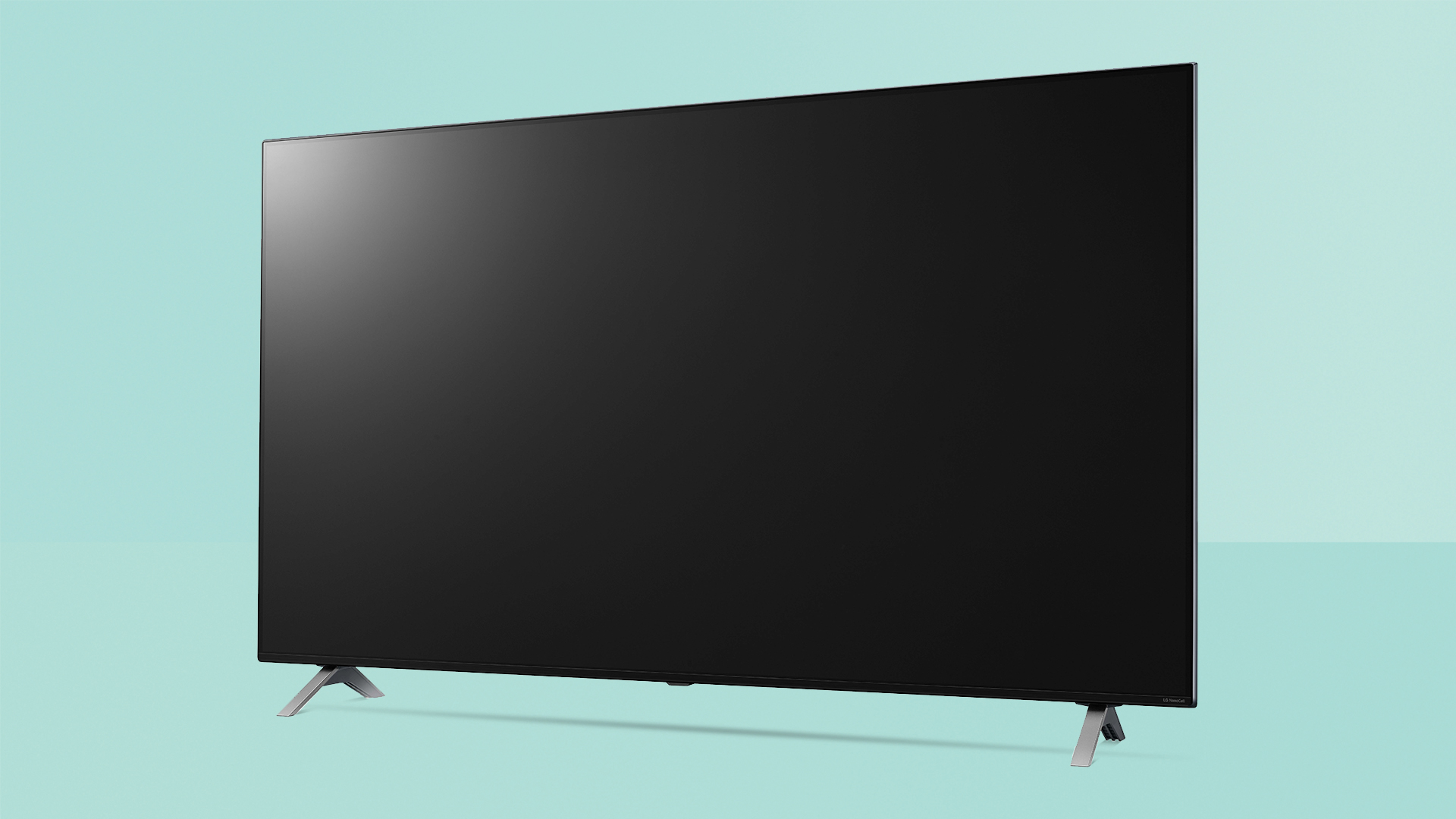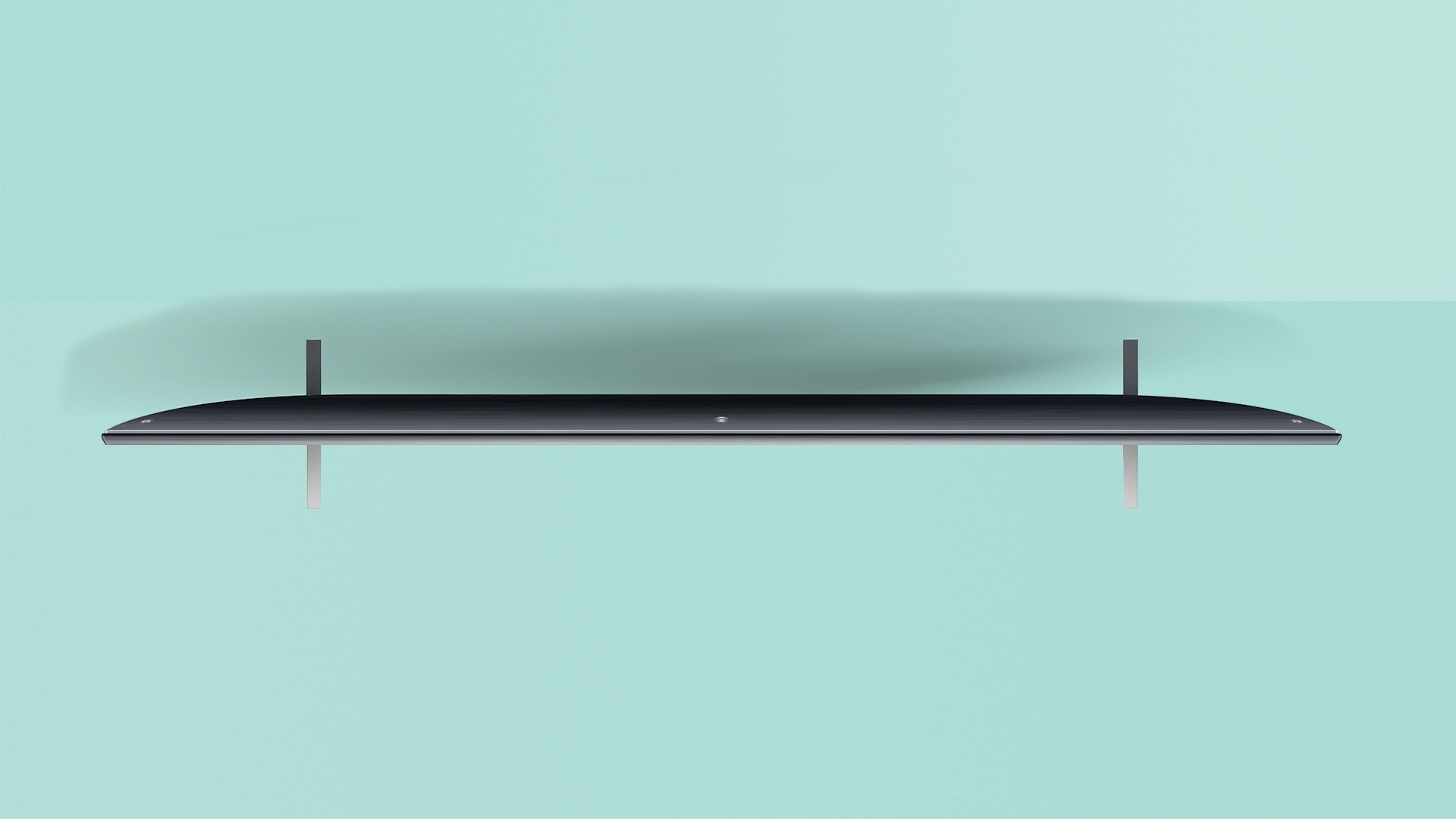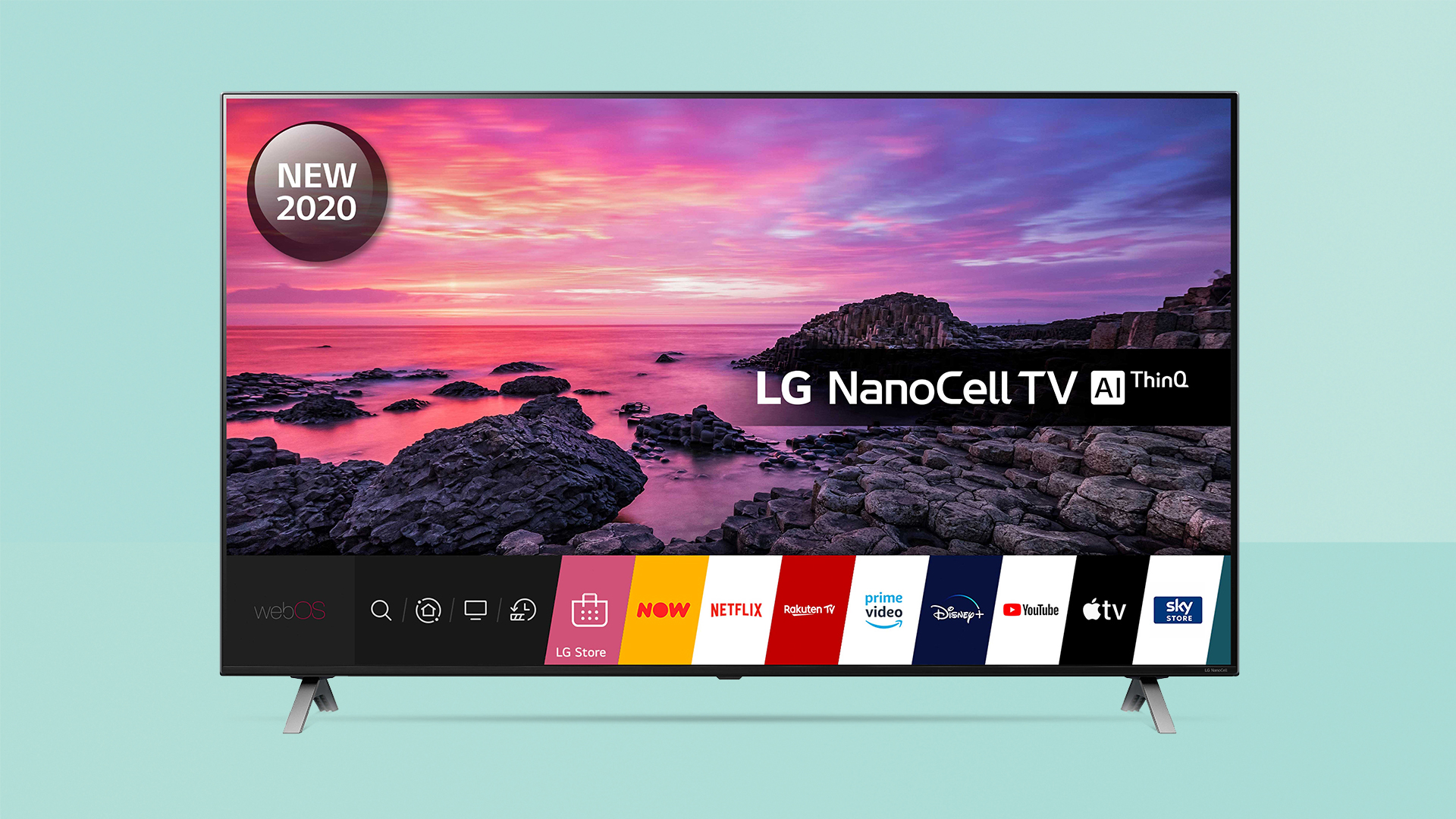LG NANO 90 (65NANO906) TV review: LG's best-ever LED TV
The LG NANO 90 has some very clever technology to help deliver colourful and striking 4K HDR pictures


The LG NANO 90 (65NANO906) delivers the best LCD picture quality the brand has ever achieved. It’s not without its limitations and certainly falls short of LG’s OLED sets, for sure, but it’s still definitely worth considering. Especially if its price drops a bit in one of this year’s sale seasons.
-
+
Impressive colour, detail and viewing angles
-
+
Much improved backlight system versus previous LG LCDs
-
+
Easy to use
-
-
Could be a touch cheaper
-
-
Black levels still bettered by some rivals
-
-
Currently (hopefully temporarily) lacks key UK catch up apps
Why you can trust T3

Welcome to T3's LG 65NANO906 TV review. The LG NANO 90 range contains LG’s most interesting LCD offering in years – maybe ever. Why? Because it combines the wide viewing angles of IPS LCD panel types with a new backlight system designed to tackle the usual issues with contrast and backlight control that IPS has.
All of the upsides with none of the problems? That's the kind of pitch we love digging into, to see if the reality can match the ambition.
It also boasts LG’s increasingly impressive NanoCell colour technology, and a strong roster of gaming features well suited to the incoming next generation of games consoles, so it promises to be future-proofed too.
That all comes at a mid-range price that faces off against Samsung's mid-tier QLED TVs, and slightly undercuts similar 2020 sets from Sony.
• The best TVs of all kinds
• The best OLED TVS, including mid-priced marvels
• The best TVs under £1000
LG 65NANO906 review: Price & features
With a price tag of £1,699/$1,499 at the time of writing, the LG 65NANO906 is pitched as an upper mid-range LCD TV. It's LG’s most premium 4K LCD TV for 2020 – anything above this from LG is either OLED or 8K (or both).
It's also available in 55-inch (£1,299/$1,049), 75-inch (£2,499/$2,499) and an 86-inch model that's a surprisingly reasonable £3,999/$3,299.
Get all the latest news, reviews, deals and buying guides on gorgeous tech, home and active products from the T3 experts
As you’d hope, this elevated range position comes with a long roster of features attached. Starting with the fact that the screen uses a ‘FALD’ (Full Array With Local Dimming) backlight design.
This means the LEDs that produce light sit right behind the LCD pixels rather than around its edges, and separate zones of LEDs can output different levels of light during any given image frame. Such backlight features almost always lead to a better contrast performance.
Test signals reveal there are only 32 separately controlled dimming zones. This is a far cry from the 480 zones or more carried by some high-end FALD TVs, such as the Samsung Q950TS.
That’s not to say, though, that 32 zones won’t be enough to help the 65NANO906 deliver a good picture for its money, especially as this set introduces a new backlight control system that can redistribute power quickly and accurately away from dark parts of a picture that don’t need it to bright parts that do.
Given that IPS panels can’t control light quite as well by ‘opening and closing’ their liquid crystals as rival VA types can, this new power manipulation system could prove a game-changer for LG’s LCD fortunes. At least among AV enthusiasts, for whom contrast is a key issue for dark-room movie nights.
Crucially, the 65NANO906’s new backlight power management doesn’t stop its IPS panel from still letting you watch the TV from a wider angle than other LCD types before contrast and colour start to drop back.
LG’s NanoCell colour technology, meanwhile, introduces a layer of tiny particles to the 65NANO906’s panel that filters out unwanted colour wavelengths. After a bit of a slow start, NanoCell tech seemed to take a big leap forward last year with LG’s debut 8K LCD TV, the 75SM9900, delivering exceptionally rich but also refined tones across.
The 65NANO906’s video processing comes courtesy of LG’s latest Alpha 7 Gen 3 processor. This is a step down in power and flexibility from the Alpha 9 system found on LG’s 8K LCD TVs and most of its 2020 4K OLED TVs. But it still promises a performance step up from last year’s Alpha 7 processor, and is presumably involved in controlling the new backlight power management system.
The LG 65NANO906’s connections are very good – chiefly because two of its four HDMIs ports support enough data to play the 4K at 120Hz 10-bit game graphics we’re expecting the PlayStation 5 and Xbox Series X to be capable of when they launch later this year.
That’s not the 65NANO906’s only game-friendly feature. When switched to its Game mode, for instance, input lag (the time the screen takes to render pictures) is a very respectable 18.4ms. Plus the 65NANO906 carries an HGiG mode. The HDR Gaming Interest Group was established a couple of years ago with a view to bringing more standardisation to the way HDR game graphics play on the myriad TVs out there. And the results of their efforts are HDR calibration systems built into games and consoles (well, the PS4 anyway), plus the 65NANO906’s HGiG setting that basically tells the TV’s own HDR processing to stand aside and let the consoles/games do their separately calibrated thing.
The HDMI 2.1 ports also provide support for variable refresh rate gaming, plus automatic low latency mode switching, where the TV switches into Game mode as soon as it detects a compatible gaming source.
The LG 65NANO906 supports the basic HDR10 HDR format, the HLG broadcast HDR format, and the Dolby Vision ‘dynamic’ HDR format. The latter adds extra scene by scene image information to the HDR stream, to help compatible TVs deliver a more accurate, punchy image.
The 65NANO906 additionally gives us our first opportunity to check out two new key picture features: Dolby Vision IQ and the Filmmaker Mode. The former combines Dolby Vision with the TV’s ambient light meter to continually adjusted image so that they retain a consistent appearance no matter how much light is in your room.
Filmmaker Mode, meanwhile, is an initiative undertaken by the UHD Alliance with film industry support that’s designed to get TVs delivering pictures that look as close as possible to the way they were designed to look in a mastering suite. This means matching frame rates, matching aspect ratios, and turning off most of a TV’s built in picture processing. Especially processing related to motion.
LG’s webOS operating system inevitably returns on the 65NANO906, and carries a mostly healthy roster of video streaming services. These include Disney+, Apple TV, Now TV, Amazon Video, YouTube and Netflix. All with 4K and HDR support where available.
There is one unexpected streaming absentee, though. LG and Freeview Play have parted ways for LG’s 2020 TVs, meaning that at the time of writing you don’t get the catch up apps for the UK’s major terrestrial broadcasters (BBC iPlayer, etc). LG says it’s working on getting each separate app added individually, but it can’t put any firm dates on when these might appear.

LG 65NANO906 review: Picture quality
Provided you’re careful how you set it up, the 65NANO906 delivers the best picture quality of any LG LCD TV to date. Thanks in no small measure to that new backlight power management system.
To see this at its best, at least when watching HDR content, you need to select the Cinema Home picture preset. This relatively gentle mode reveals black level depths and backlight consistency that just aren’t usually associated with IPS screens. As a result, dark scenes look less grey and more convincing, while shots containing a mix of bright and dark image elements suffer much less with distracting haloing of light around stand-out bright objects.
To be clear, the 65NANO906 neither delivers immaculately deep black levels nor removes all backlight clouding issues. But by reducing them so much, it makes the 65NANO906 a much more consistently immersive watch.
The greater backlight refinement also makes it easier to appreciate the TV’s other strengths, especially its NanoCell colour system. This serves up a lovely combination for the 65NANO906’s mid-range price of vibrant but also subtle and refined tones, contributing to an excellent sense of depth and three-dimensionality.
It’s worth stating again, too, that the 65NANO906’s improved contrast and colour remain intact even if you view the TV from a fairly wide angle, as you would expect with an IPS screen.
The colour subtlety also teams up with the screen’s 4K resolution to unlock bags of detail and texture in native 4K sources. And if you use the provided Cinema Clear TruMotion processing option, this clarity remains largely intact even when there’s a camera pan or speedy object to deal with.
What’s more, as well as gently reducing judder without going so far that it makes films look like TV shows, the Cinema Clear setting generates hardly any unwanted processing side effects.
The improved backlighting doesn’t just improve the 65NANO906’s handling of dark scenes and colours. It also helps LG achieve punchier HDR highlights, and generally brighter HDR pictures, overcoming another traditional IPS limitation.
Actually, the LG 65NANO906’s portrayal of HDR sources looks more intense than you’d expect from the TV’s measured brightness peaks (using a 10% of screen area white HDR box test screen) of 520 nits for the Standard preset and 440 nits for the Cinema Home preset.
It should be stated that some rival mid-range LCD TVs push to 1000 nits and beyond. However, I suspect trying to achieve a number like that on the IPS 65NANO906 would have increased its potential for backlight blooming and contrast problems. As well as pushing the price up, of course.
One important point to add about the 65NANO906’s brightness and colour performance is that it’s well worth adjusting the picture preset depending on your room conditions. So while the Cinema Home setting delivers the best all-round performance for a dark room, Standard is a good option for a bright room.
Standard mode looks much brighter, delivers much more intense and punchy colours, and actually pushes black levels slightly deeper than Cinema Home. I wouldn’t recommend using the Standard mode for dark rooms, though, as it can cause detail crushing in dark areas, and increases the aggressiveness of backlight blooming around bright objects. Two issues that are much more noticeable when they’re not ‘hidden’ by ambient light.
The 65NANO906’s pictures benefit, as you’d expect, from being fed Dolby Vision sources. They look slightly punchier and get even more precision out of the NanoCell colour system. Though I’d stick with the Dolby Vision Cinema Home preset rather than the Standard one, as the latter can lose detail in bright areas and generally looks too aggressive.
Finally, the Filmmaker Mode is… interesting. And not necessarily in a negative way. Colours look quite flat versus other settings, motion looks quite juddery, and brightness is limited. But it also brings out impressive amounts of subtle detail in both dark areas and colours. Plus it doesn’t lock you out of any picture settings, so you can still tweak things if you like the Mode’s core approach but want to ‘amp things up’ slightly in a couple of areas.

LG 65NANO906 review: Sound quality
The 65NANO906 boasts an impressive array of audio features, but at the time of writing, it doesn’t get the maximum value from all of them.
For instance, a potentially handy audio calibration system that sends test signals to the Magic remote as you hold it in your favourite seating position just wouldn’t work during my tests. It kept locking the TV up. LG has confirmed there’s an issue with the feature, but says it will put it right via a planned June firmware update.
The 65NANO906 also supports Dolby Atmos decoding. But this doesn’t sound that great from its speakers, in truth. The sound doesn’t project as well as you might expect, and bass can sound muted and distorted.
Fortunately one other feature, LG’s AI Sound mode, saves the day. This combines LG’s knowledge of the strengths and weaknesses of its own speaker system with a constant evaluation of a soundtrack’s qualities, resulting in a much more powerful, forward-presenting sound that also spreads further from the screen without becoming incoherent.
With AI Sound in play, the 65NANO906 sounds middling to good for a mid-range LCD TV.

LG 65NANO906 review: Design & usability
The 65NANO906 looks okay. Its frame is reasonably but not spectacularly thin. Its finish is glossy but a bit plasticky. Its feet don’t draw attention to themselves, but aren’t particularly stylish either. And its rear gets a nice smooth finish, but is relatively chunky by today’s standards.
It’s easy to forgive the slightly chunky rear, though, given that this set is using direct rather than edge LED lighting.
The combination of LG’s unique ‘point and click’ Magic remote control and attractive webOS smart interface make the 65NANO906 very easy to use. The webOS system is a touch sluggish compared with how it usually runs on LG’s Alpha 9 processor OLED TVs. But not enough to become frustrating.
LG also deserves credit for supporting built in (as in, you don’t need an external listening device) voice control via LG’s ThinQ AI system, Google Assistant and Amazon Alexa systems. Especially as the voice recognition now supports 20 languages rather than the previous 15, and issues more natural, ‘human’ responses to your voice queries.
Finally, LG has improved the look of its Home Hub screen for monitoring other smart devices on your network, and has enhanced the presentation of its recommendation and search result screens, making it easier to browse for content to watch.

LG 65NANO906 review: Verdict
The NANO 90 is the best LCD TV that LG has ever made. That is not the same, to be clear, as saying it’s the best LCD TV ever made, period; even its clever new backlight system can’t completely overcome the backlight limitations associated with its IPS panel technology.
The improvements are enough, though, in conjunction with LG’s ever-improving NanoCell colour tech and gaming features, to make the 65NANO906 an enjoyable TV to watch in both light and dark rooms. Which makes it a much more viable mid-range TV option than any LG LCD TV I’ve seen for years, frankly.
In terms of competition from 2020's TV rangers, it takes on the likes of the Sony XH9505 and the Samsung Q70T, while a step up in price would take you to the Samsung Q80T, which offers more brightness and more advanced dimming, for more cash.
At launch, though, its strongest competition is actually from 2019's TVs, truth be told. The Samsung Q80R is a little cheaper than this, and offers much, much more brightness and better localised dimming, with Samsung's QLED technology giving it beautiful colour vibrancy. It's our pick of the LCD options in this price range right now (and saves you enough cash for one of the best soundbars).
For this price, you can also go OLED, though. The LG B9 OLED TV is around the same price, and offers slightly stronger brightness, and massively better dark performance thanks its use of OLED rather than LCD. The TV also includes similarly good image processing, and is still outfitted with those features for next-gen gaming. Again, while it remains in stock (it'll be replaced by a new more expensive model soon), we'd probably pick it over the NANO 90.
So while there are sets we prefer to this LG, it still more than holds it own overall – LG's advancements really impress.
John Archer has been testing TVs and AV gear for over 25 years, having worked on Home Cinema Choice magazine. He's a contributor to Forbes, TechRadar, Trusted Reviews, Wired and many more places – if you've owned a TV in the last couple of decades, John's probably reviewed it somewhere. He's seen so many hot new technologies come and go, like tears in the rain.
